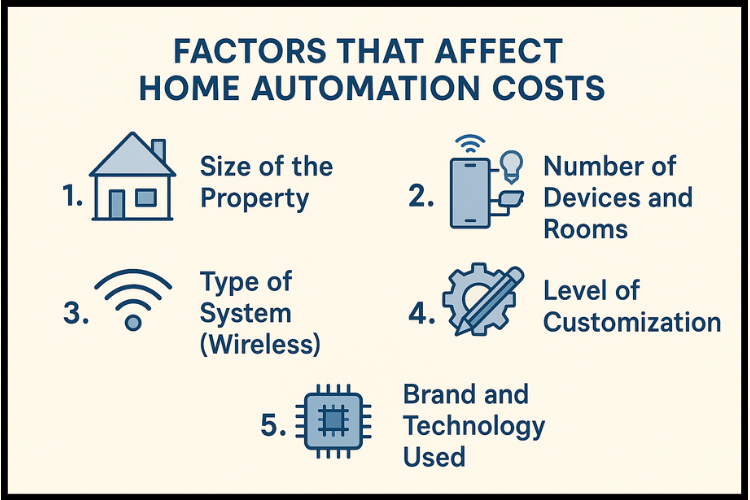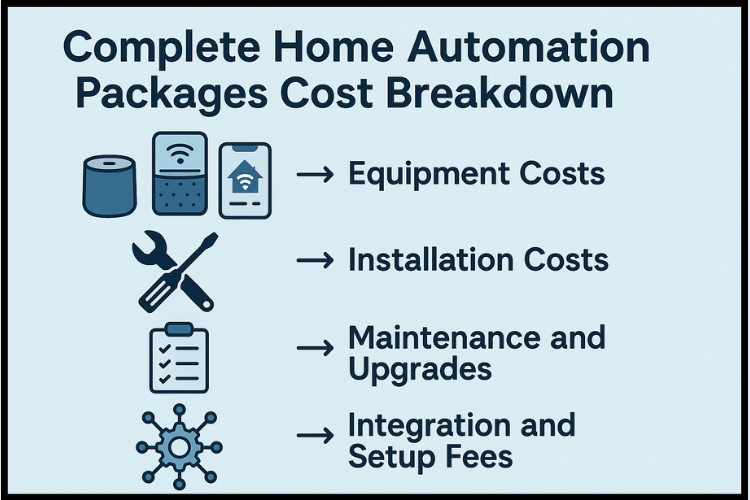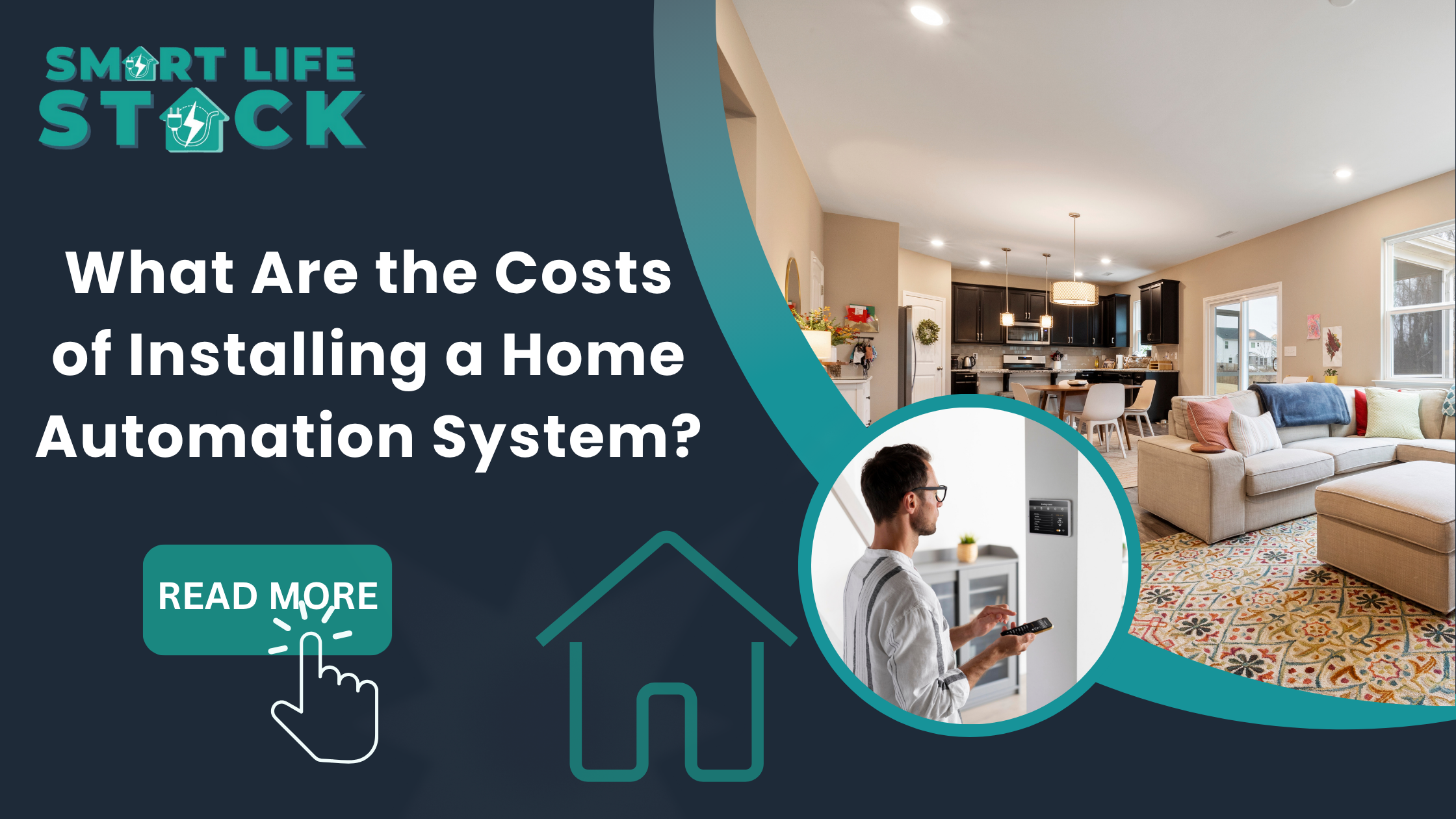Introduction
Ever wondered how much it really costs to turn your home into a smart home? With technology advancing every day, home automation is no longer a luxury; it’s a practical investment. From controlling your lights and appliances to securing your home with just your phone, automation adds both comfort and efficiency.
If you’re looking for a reliable home automation company in Mumbai, Smartlifestack offers customized solutions to fit every home and lifestyle. But before diving in, let’s understand the real cost behind it.
Understanding the Basics
Components of a Home Automation System
Ever wondered how much it really costs to turn your home into a smart home? With technology advancing every day, home automation is no longer a luxury; it’s a practical investment. From controlling your lights and appliances to securing your home with just your phone, automation adds both comfort and efficiency.
If you’re looking for a reliable home automation company in Mumbai, Smartlifestack offers customized solutions to fit every home and lifestyle. But before diving in, let’s understand the real cost behind it.
Smart Devices and Their Functions
You can automate almost everything: lighting, climate, curtains, entertainment systems, and even door locks. Each device can be programmed to work independently or as part of a scene (for example, a “Good Night” mode that turns off all lights).
How Automation Systems Work
These devices communicate via a hub or mobile app. You can schedule tasks, monitor your home remotely, or use voice commands through Alexa or Google Assistant.
Factors That Affect Home Automation Costs

1. Size of the Property
The larger the home, the higher the cost. Bigger homes require more devices, sensors, and controllers.
2. Number of Devices and Rooms
Each room adds its own devices, smart switches, motion sensors, and more: the more rooms you automate, the more your budget increases.
3. Type of System (Wireless)
Wireless Systems: Easier and cheaper to install, suitable for existing homes.
4. Level of Customization
Custom programming, unique scenes, and voice integration increase the overall cost.
Contact us
OTP Sent On WhatsApp
5. Brand and Technology Used
Premium brands are more than affordable Zigbee systems.
Most use Home Automation Systems
Lighting Automation
Lighting Automating gives you full control over brightness, scheduling, and ambiance. It also helps in saving energy and enhancing mood lighting.
Fan Automation
allows you to control your ceiling fans using your smartphone, remote, or voice assistants like Alexa and Google Home.
AC Automation
Smart AC automation and controllers can adjust your home’s temperature automatically based on time, occupancy, or even your preferences.
Entertainment and Audio Systems
Multi-room audio systems and smart entertainment setups provide immersive experiences while ensuring all your devices are synchronized.
Smart Curtains and Blinds
Motorized curtains and blinds can open or close automatically based on sunlight or schedules, adding both comfort and efficiency.
Complete Home Automation Packages

A complete setup connects all systems, lighting, security, climate, entertainment, and more under one central control for seamless operation.
Cost Breakdown
1. Equipment Costs
Most of your budget goes into the hardware: smart switches, sensors, hubs, and controllers. The type and number of these devices largely influence the total cost.
2. Installation Costs
Professional installation ensures proper setup, device configuration, and seamless integration across systems.
3. Maintenance and Upgrades
Automation systems need occasional software updates and minor maintenance to ensure they continue to perform efficiently.
4. Integration and Setup Fees
Customizing automation scenes, connecting to mobile apps, and enabling voice commands may require additional setup assistance.
Additional Factors to Consider
Compatibility
Ensure all devices work together; mixing incompatible brands may increase costs.
Energy Efficiency
While upfront costs may be high, energy savings make automation cost-effective in the long run.
Cost Comparison: DIY vs Professional Installation
DIY Home Automation
Cheaper upfront (you can buy smart plugs and bulbs online), but setup can be limited and less reliable.
Professional Installation
Offers seamless integration, long-term reliability, and expert support but comes at a higher cost.
Pros and Cons:
- DIY: Low cost, limited control.
- Professional: Higher cost, premium experience.
Real-Life Cost Considerations
Small Apartments
Basic automation setups usually cover essential areas like lighting automation and security, offering convenience without heavy customization.
Medium to Large Homes
Mid-level systems may include additional features like curtain automation, climate control, and entertainment integration.
Villas and Bungalows
Larger properties often require complete automation covering lighting, HVAC, security, entertainment, and outdoor systems.
Long-Term Savings and Value
Home automation helps reduce electricity bills by optimizing energy use. It also increases your property’s resale value, making it a long-term investment, not just an expense.
How to Choose the Right Automation System for Your Budget
- List Your Priorities: Start with essential areas like lighting or security.
- Plan in Phases: Gradually expand your system as your budget allows.
- Compare Brands: Choose systems that balance performance, scalability, and affordability.
- Focus on Compatibility: Ensure all devices can communicate smoothly for the best results.
At Smartlifestack, we provide budget-friendly, complete home automation solutions tailored to your lifestyle. Our experts help you plan the right system that fits your space, meets your goals, and offers seamless integration for long-term convenience
Tips to Reduce Home Automation Costs
- Begin with a few essential smart devices and expand later.
- Choose multi-functional products to reduce hardware requirements.
- Buy from trusted local integrators or reliable online sources.
- Use energy-efficient devices to lower long-term expenses.
Why Professional Consultation Matters
Experts can design a system that fits your budget, lifestyle, and future expansion. A professional consultation ensures you don’t overspend or install incompatible devices.
Common Mistakes to Avoid
- Ignoring compatibility between brands.
- Automating unnecessary areas.
- Not considering internet reliability.
- Skipping future-proof planning.
Conclusion
The cost of installing a home automation system varies depending on your home size, preferences, and chosen technology. While it might seem expensive initially, the comfort, convenience, and energy savings make it worthwhile.
Whether you go for a simple setup or a complete smart home, Smartlifestack ensures a seamless automation experience that brings technology and lifestyle together, a future-ready investment for modern living.
Frequently asked questions
Q1. Is home automation expensive to maintain?
Not really. Most smart devices need minimal maintenance.
Q2. Can I automate my existing home?
Yes, wireless systems like Zigbee are ideal for retrofitting existing homes.
Q3. Which is cheaper, wired or wireless automation?
Wireless systems are generally more affordable and easier to install.
Q4. How long does installation take?
Basic setups take a day or two, while full systems may take a week, depending on complexity.
Q5. Does home automation save electricity?
Yes, it helps reduce power wastage through smart scheduling and sensors.


